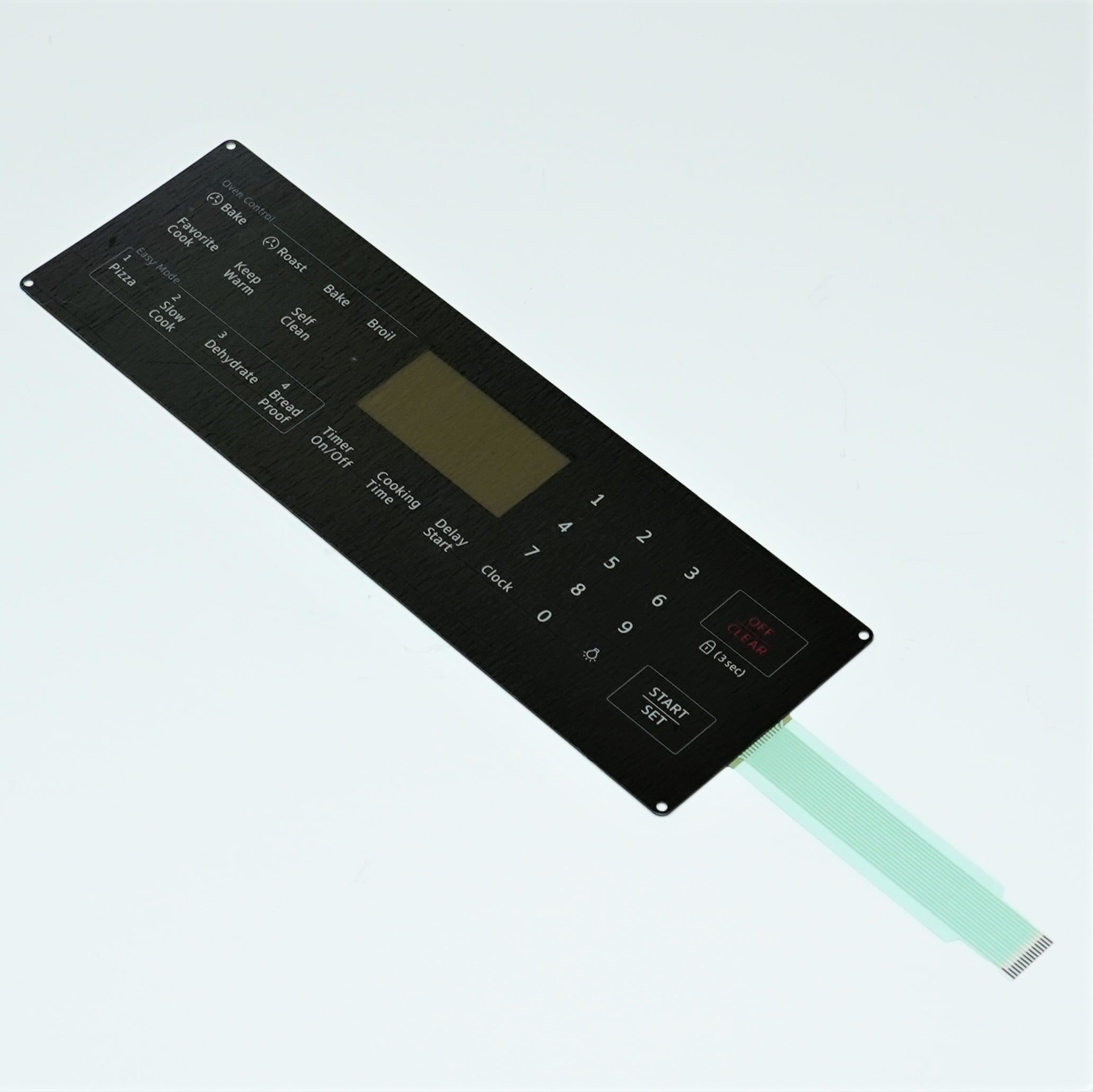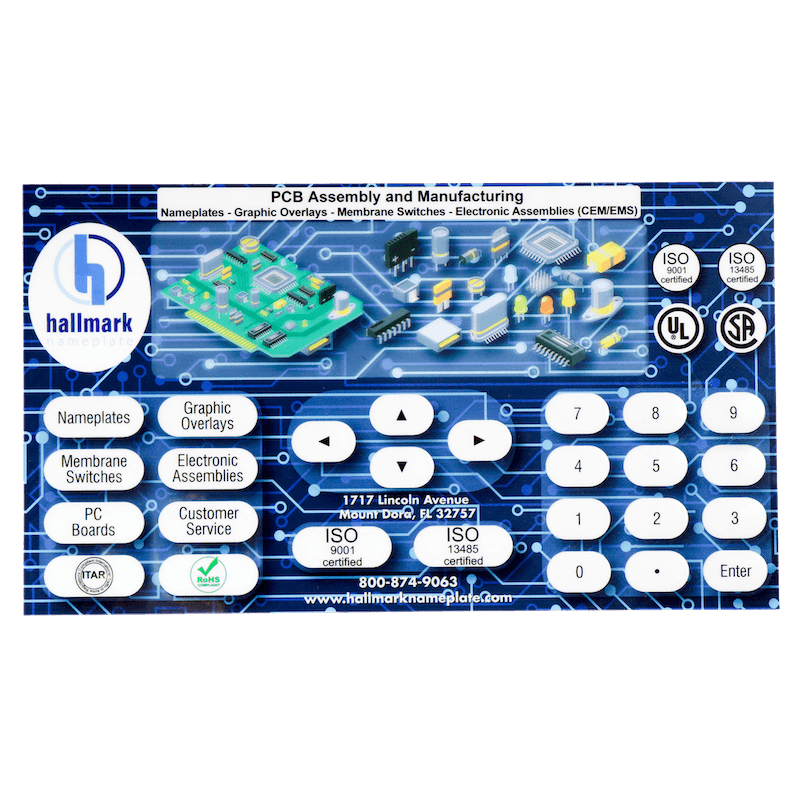The Role of Membrane Switches in Enhancing Device Functionality
The Role of Membrane Switches in Enhancing Device Functionality
Blog Article
Understanding Membrane Layer Switches Over: The Secret to Sturdy and Dependable Controls

What Are Membrane Layer Buttons?
Membrane buttons are an advanced service in the realm of individual interface technology, combining performance and style perfectly. These gadgets act as an interface between customers and digital systems, incorporating several parts right into a portable format. Typically built from versatile, thin layers of materials, membrane switches are created to react to touch, making it possible for individuals to interact with machinery and electronic tools properly.
The primary components of a membrane button consist of a printed circuit layer, visuals overlay, and a spacer layer that protects against unintended activation. The graphic overlay can be personalized to show brand identity or customer choices, enhancing visual appeals while making sure usability. Membrane layer switches are commonly utilized in numerous applications, including clinical devices, customer electronic devices, and industrial equipment, owing to their longevity and resistance to ecological factors such as wetness and dirt.
One of the key benefits of membrane switches is their capacity to hold up against wear and tear, making them excellent for high-traffic environments. Furthermore, they are light-weight and require very little area, enabling ingenious layouts in item growth. In general, membrane changes represent a efficient and functional selection for contemporary digital user interfaces, marrying modern technology with user-centric design concepts.
Exactly How Membrane Layer Switches Job
The operation of membrane switches over joints on a basic yet efficient mechanism that translates user input into electronic signals. When a customer presses the button, the top layer deforms, enabling a conductive aspect in the circuit layer to make call with a corresponding conductive pad on the underside of the visuals overlay.
The design of membrane switches can vary, however they commonly include domes or tactile components to provide responses to the customer, enhancing the general experience - membrane switch. The products used in membrane layer buttons, such as polyester or polycarbonate, add to their resilience and resistance to ecological factors, consisting of moisture and dust. Furthermore, the published circuits are usually enveloped, which safeguards them from damage over time.
Benefits of Membrane Layer Switches

In addition, membrane layer buttons are known for their resilience. Created from robust products, they are resistant to dust, dampness, and physical wear, which dramatically prolongs their life-span compared to conventional mechanical switches. This longevity makes them particularly suitable for high-traffic atmospheres and applications needing longevity.
Another substantial benefit is the ease of cleansing and upkeep. The smooth surface area of membrane changes decreases dirt accumulation and is commonly unsusceptible spills, making them perfect for setups that require frequent sanitization.
Moreover, membrane switches supply a streamlined account, leading to a thinner design that can be incorporated right into various tools without adding mass. This function not only enhances the aesthetic appeal but likewise adds to a more ergonomic product design.
Applications of Membrane Buttons
Straightforward and versatile, membrane layer buttons find applications across a wide variety of markets, consisting of medical devices, consumer electronics, and commercial devices. In the clinical area, these buttons are indispensable to gadgets such as analysis devices, person surveillance systems, and mixture pumps, where reliability and convenience of cleaning are vital. Their ability to withstand extreme atmospheres and keep functionality makes them perfect for such applications.

In consumer electronics, membrane layer buttons are used in items like microwaves, washing equipments, and remotes - membrane switch. Their streamlined design allows for instinctive user interfaces, enhancing the general individual experience while offering sturdiness and resistance to tear and use
Industrial devices likewise gains from membrane layer buttons, especially in control panels for equipment and automation systems. These switches use security against dust and moisture, guaranteeing consistent efficiency in tough environments. Furthermore, their adjustable functions permit manufacturers to tailor them to particular operational demands, improving performance and functionality.
Choosing the Right Membrane Layer Change
When selecting a membrane layer switch, it is necessary to think about different elements that influence efficiency and viability for particular applications. The primary factors to consider consist of environmental problems, responsive comments, durability, and layout requirements.
First, assess the operating atmosphere; switches exposed to wetness, chemicals, or severe temperatures call for specific materials to guarantee long life and performance. Next off, evaluate the requirement for tactile feedback. Depending upon customer communication, some applications may benefit from a tactile feedback to validate activation, while others may prefer a non-tactile layout directory for visual reasons.
Sturdiness is an additional essential aspect; membrane switches ought to be designed to withstand constant use, influences, and abrasion. Make certain the picked switch can withstand the anticipated lifecycle, particularly in high-usage situations.

Final Thought
In conclusion, membrane changes offer as important elements in the layout of durable and dependable control systems throughout various markets. The why not try these out convenience of membrane layer switches enables for customized services that satisfy details operational needs, strengthening their value in modern-day technology.
Membrane layer switches over stand for a vital element of modern-day user interface layout, blending performance with resilience in different applications.Membrane buttons are an innovative option in the realm of individual interface innovation, combining capability and design seamlessly. Normally constructed from versatile, slim layers of materials, membrane layer buttons are designed to react to touch, allowing customers to connect with equipment and digital tools effectively.
The design of membrane buttons can differ, however they frequently incorporate domes or responsive elements to give comments to the individual, enhancing the total experience.In conclusion, membrane changes offer as important parts in best site the design of dependable and long lasting control systems throughout different industries.
Report this page